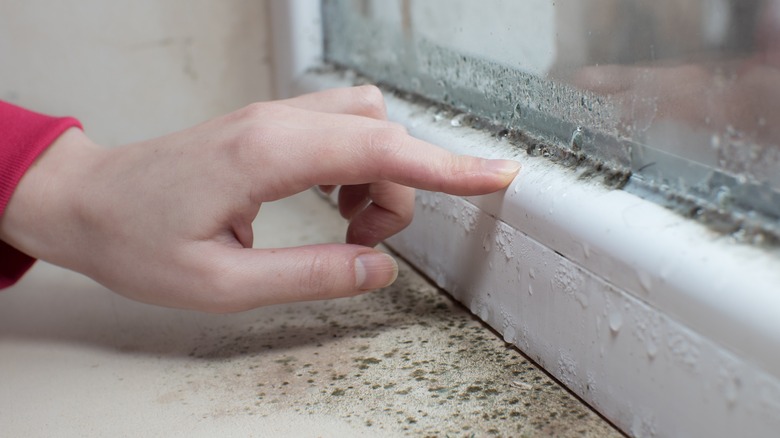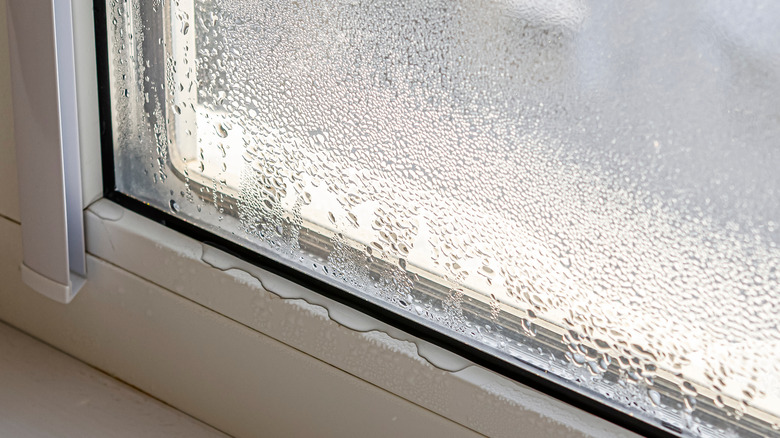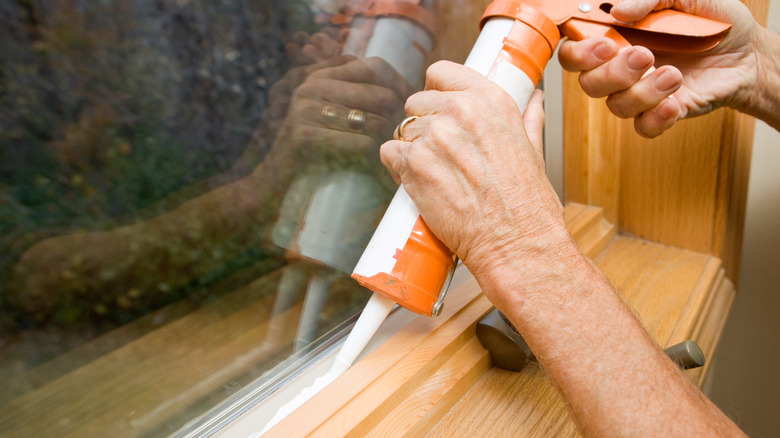Why You Start To See More Mold On Your Windows In The Winter (And How To Get It Off)
During winter time, keeping your home feeling warm and as energy-efficient as possible is important. However, when you have a warm home with plenty of humidity and when cold weather strikes the glass on the windows, it can lead to frost buildup on the inside of the pane. As the frost melts, a surprising amount of water remains on the window and leaks downward onto the sill. It even can leak inside crevices around the window frame, making it more difficult for the moisture to evaporate on its own. Over time, this can lead to the formation of black mold around the window and sill. The appearance of mold certainly isn't an instantaneous occurrence, but it can happen over several weeks of winter.
How do you know if you have this issue? Even though it's called black mold, it can be olive green, brown, or dark gray in color. It can appear anywhere in this area, including on the glass itself. Pay particular attention to the corners. Sometimes, what looks like black mold may actually be dust.
If you see this mold around the window, the first step is to remove it as quickly as possible. First, though, put on protective clothing, including gloves, a face mask, and safety glasses. One of the best cleaning options is also a natural one. Make a paste from two parts baking soda and one part vinegar. Spread it on the mold and wipe it away after it dries.
Initial steps for preventing black mold from forming on windows in winter
You can take a few short-term steps to help you resist the formation of black mold around your windows. Start by trying to prevent frost on the inside of the windows in winter. Keep your home's temperature with the furnace high enough to prevent frost from forming. You also should take steps toward reducing the amount of humidity inside the home. Run a large dehumidifier that handles the entire home or a small dehumidifier and fan near the windows where the frost is forming.
You should wipe off any moisture you see as soon as possible with a towel. If the pane receives any sunlight during the winter months, you should leave the blinds open as much as possible. This allows the sun to warm the glass and to help any moisture from frost to evaporate faster.
Another option is to keep the sill and frame as clean as possible, especially if they are made of aluminum. Mold needs organic material to be able to form and grow. On wooden sills, the spores can make use of the organic substrate in the wood to take hold. With aluminum sills, though, there are no organic materials. Consequently, the dust that remains on the sills can provide some organic material and can give mold a place to start growing. Removing dust from both aluminum and wood frames regularly can make it harder for the mold to form.
Long-term solutions for preventing mold on windows and sills in winter
One of the best long-term steps you can take to prevent frost from appearing on the glass is insulating the windows in winter, such as by adding plastic film over the top or adding cellular shades or thermal curtains that can reduce energy loss through the glass. When you have a lack of insulation as part of the glass panes, such as with a single-pane window, this creates a greater chance for frost to form. You also may see frost forming on double-pane windows if the seal between the panes is broken. You would have to choose to replace them — preferably in the summertime — to fix this problem and to prevent the buildup of frost.
Another option is to add caulk around the window frames. If your weatherstripping in the area is loose or missing, make sure that you replace it. Both of these options prevent the exchange of cold and warm air in the area, which can keep frost away. If the windows just don't fit quite right, you may need to add extra insulative material around them, preventing drafts.
Although it's far more common to see black mold in wintertime around your windows, it occasionally can happen during the summer, too. If you are seeing this problem in summer, it could mean that the mold formed inside the drywall in the area during winter. You may need to hire a pro to remove it.


